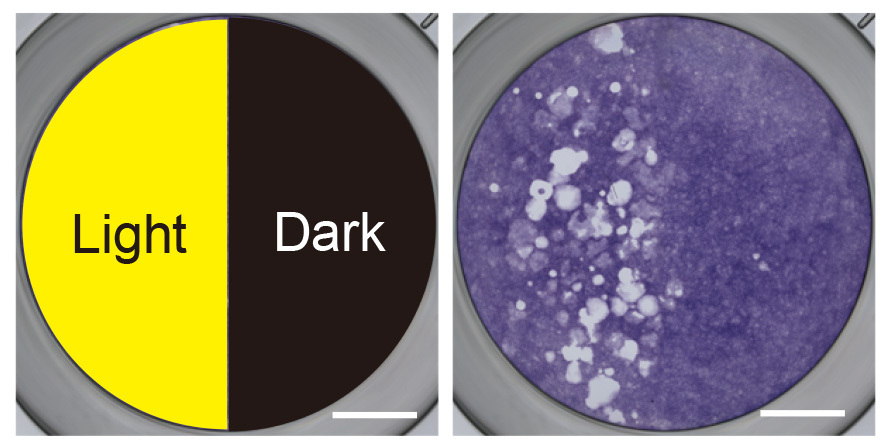Opto-RANK: A light switch for osteoclasts
Researchers from Tokyo Medical and Dental University (TMDU) find a novel optogenetics tool called Opto-RANK that can be activated by light and promote macrophage precursor differentiation into osteoclasts
Tokyo, Japan – Drinking milk helps your bones grow big and strong; but what if direct exposure to light could help too? Now, researchers from Japan report that lighting up bone tissue could help treat bone disease.
In a study published last month in Scientific Reports, researchers from Tokyo Medical and Dental University (TMDU) have revealed that a treatment approach based on light could help activate bones to repair themselves.
Bones are constantly being remodeled through the action of osteoclasts, which break down bone tissue, and osteoblasts, which create new bone tissue. Both cell types develop from immature precursor cells, and controlling their activity is a promising approach for treating bone growth disorders.
“Previous studies have used optogenetics, in which target molecules are activated by light, to induce or enhance specific cellular functions,” says the co-senior author of the study Takao Nakata. “However, optogenetics tools have not yet been used to generate mature differentiated cells from their precursors, such as osteoclasts from monocytes/macrophages.”
In this study, the researchers constructed a light-activated form of RANK, an important signaling protein in osteoclast differentiation. They then expressed this optogenetic protein, called Opto-RANK, in macrophages and activated it with light to see if the cells would start to behave like osteoclasts.
“The results were very clear,” explains Tomohiro Ishii, co-senior author. “Opto-RANK responded to blue light activation by forming active clusters that recruited TRAF6, a crucial molecule that regulates osteoclast differentiation.”
In addition, the light-activated cells exhibited activation of three genes that are normally expressed in maturing osteoclasts. The cells also formed many small pits, which is a feature of mature osteoclasts that helps them break down bone tissue.
“Our findings suggest that Opto-RANK can be used to induce macrophage differentiation into osteoclasts and stimulate local bone resorption when activated by blue light,” says Nakata.
The precise control of Opto-RANK activity that can be achieved with light activation could make it a powerful tool for cell therapy, such as the treatment of abnormal calcification diseases and orthodontic issues. In addition, Opto-RANK could be useful beyond bone biology, as RANK signaling is involved in other important functions, such as immunity, body temperature regulation, and tumor development.

Light-Induced Osteoclast Activity
A representative micrograph of osteoclast differentiation and activity in response to irradiation with blue light. Numerous small pits formed on the bone-like substrate in the half of the well that was exposed to light as a result of bone resorption by light-induced osteoclasts.
###
The article, “Development of an optogenetics tool, Opto‑RANK, for control of osteoclast differentiation using blue light,” was published in Scientific Reports at DOI: 10.1038/s41598-024-52056-w
Summary
Journal Article
TITLE:Development of an optogenetics tool, Opto-RANK, for control of osteoclast differentiation using blue light
DOI:https://doi.org/10.1038/s41598-024-52056-w
Correspondence to
Takao Nakata,Professor
Department of Cell Biology,
Graduate School of Medical and Dental Science,
Tokyo Medical and Dental University(TMDU)
E-mail: info.cbio(at)tmd.ac.jp
*Please change (at) in e-mail addresses to @ on sending your e-mail to contact personnels.

